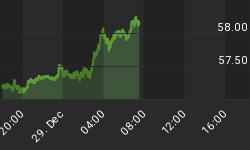I have been tracking the USDJPY cross rate for sometime, and it is my belief that US Dollar will move higher relative to the Japanese Yen, and that this will represent a secular trend change.
I initially discussed the fundamental and technical picture for the USDYEN in the article, "Short Yen, Long Dollar" written on January 29, 2010. My conclusion in looking at the technical set up was that "the US Dollar should outperform the Japanese Yen, which is on the cusp of a secular down trend". Over the last 4 months, little has changed in my world that would suggest differently.
The fundamental story was best explained by Kyle Bass of Hayman Partners, LP in this quarterly letter to his investors. Bass's argument (see page 15 of the report) is that the Yen should be vulnerable as chronic deficit spending and changing demographics of its population should result in higher interest rates and/or a weaker Yen.
All old news until we got the mother of all bailouts this past weekend. This has prompted Bass to write another letter to his investors (which is now making the rounds on the internet). The crux of Bass's letter and thinking is in these comments:
"The ECB's monetary policy action simply adds to the moral hazard that was originally created on the fiscal side of the problem. The pattern is now set. This is exactly how very smart people meeting together in order to "solve" a debt crisis frequently (and now permanently, it appears) mistake a solvency crisis for a liquidity crisis. From now on, it seems everything will be deemed to be a liquidity crisis that will be met with more "bail-outs" and debt financed spending. This will eventually break traction in a violent way and facilitate severe inflation or even hyperinflation. The one thing the EU taught us this weekend is that paper money will be worth less (maybe much less) in the future."
Then he states about Japan:
"Outside of Greece and "Club Med" countries, Japan will begin to grace the front pages of newspapers very shortly. Japan has already reached a point where its central government tax revenues are eclipsed by debt service and social security payments alone. Coupled with its debt and demography problems, the world's second largest economy is about to enter a real bond crisis.
The competitive devaluation will begin in full force with Japan needing a weaker Yen to grow exports, the US needing a weaker dollar in order to double our exports (under the current Obama plan), and the EU really needing a weaker euro in order to grow their own exports."
Bass's entire letter can be accessed by clicking here: Bass Letter.
The ARL Advisers' Real Time Portfolio is long the ProShares Ultra Short Yen (symbol: YCS). This is a 2x leverage product that bets against and moves inverse to the YEN. This position was established on January 28, 2010.
You can view the portfolio by clicking on this link: PORTFOLIO
You can view the portfolio's performance by clicking on this link: PERFORMANCE
















